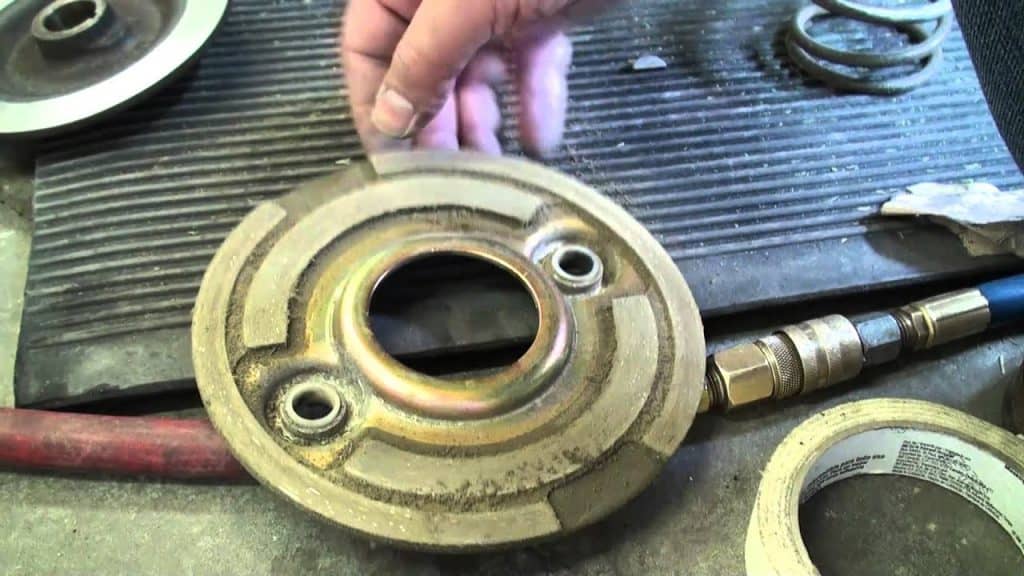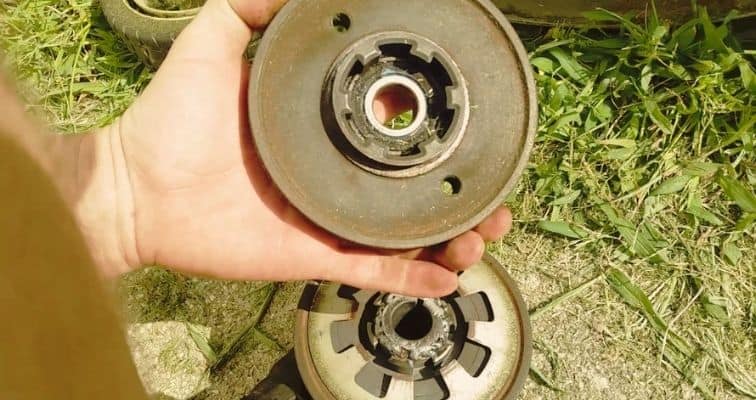The blade brake clutch is a safety feature on your lawnmower. While it is a great idea to purchase one, it is first important to understand how it works.
What is the purpose of a blade brake clutch?
A lawn mower equipped with a blade brake clutch offers an additional feature that is not found in regular mowers. So what is a blade brake clutch on a lawn mower?
The blade brake clutch allows the operator to disengage the mower blade rotation without stopping the engine. This comes in handy when you need to cross the gravel or a paved path, empty the mower bag or wish to stop mowing to remove some obstacles on the way. A mower with a blade brake clutch saves you from switching off the mower and starting the engine again and again during a single session.
How to operate the blade brake clutch?
The process of operating the blade brake clutch is similar in most mower models. Here are the steps to follow:
- Start the mower engine.
- The throttle should be adjusted to the highest setting.
- The stop button is usually found on the right-hand side. Push and hold this button to stop the blade.
- Now pull the lever used for blade control towards the direction of the mower handle and hold it in its place.
- To engage the blade, release the blade stop button.
- These actions enable the rotation of the mower blade.
- To immediately stop the blade rotation, release the blade control lever. This will trigger the blade brake clutch.
While it is smart to buy a lawn mower with a blade brake clutch for added safety, you should be well aware of how this additional feature works.
If the blade break clutch starts to make a noise, this signal of a mechanical malfunction. Immediately stop using the blade brake clutch.
Before you resume your routine mowing, delve deep and find out the reason for the noise. An improper operation may also create noise. It is important to educate yourself about it and take the necessary steps.
What are the different kinds of noises that a blade brake clutch makes?
You may hear various kinds of noises that may arise because of a mowers blade brake clutch problem. Anything different from the usual noise should be taken seriously.
Here we list down a few common noises that a blade brake clutch could explain the possible reason for the same.
- Clanking or rattling sound may indicate a broken or a loose part that is hitting against the various metal components in the mower.
- A squalling noise may either indicate that the blade brake clutch parts need lubrication or that some parts may have worn out or may have shifted from their original position.
- A grinding noise usually is a warning of a metal rubbing against another metal.
Repairing and Assembly of the Blade Brake Clutch
There are varied designs of the blade brake clutch manufactured by different manufacturers. In most cases, it consists of a couple of drums or plates that get together when the clutch is engaged. A linkage brings the clutch sides together, and a brake is used to stop the blade. This is also where the problem usually starts.
Most issues are found in the blade clutch linkage that is used to engage the clutch. The cables and springs could break, or the bracket could bend. The clutch drum and plates could wear after sometime when it starts to slip not locking well together. The blade brake wears, causing a slight drift in the blade even though the clutch is not engaged.
There are varied designs, so the repair steps differ widely. Here are some standard steps that should be followed:
- Get access to the clutch and inspect it. This can be found above the blade and under the mower.
- You will notice a cover on the clutch. Remove this.
- Some clutches are self-contained, where you can remove the clutch and the linkage as a single unit. The others could have the clutch located under the deck.
- The linkage is spread across the mower deck. There are some components placed under and some above the deck.
- To diagnose the issue, spot any missing or broken springs, power, or metal savings that indicates metal on metal wear. There could be misaligned or loose parts.
- Once you diagnose the problem, the repair involves removing and replacing the worn or broken parts.
It is an overwhelming task to repair a blade brake clutch which is best left to an expert unless you are a mechanically inclined operator.

Problem with the break blade clutch cable
If there is trouble with the engagement of the lawnmower’s blade, then this could be because of a faulty cable.
The cable is attached between the blade clutch and the blade bail. It is made of a metal cable with a plastic sheath, cast metal ends, and one or two mounting brackets. The majority of the problem with the engagement cable arises because of the metal cable itself.
The cast end which connects the cable to the clutch and the bail is prone to severe breakage after many years of use. The steel cable could break or fray, which is accelerated because of rust.
There could also be an issue with the cable kink, which occurs when the cable gets snagged on a fence or a shrub. The metal cable that is kinked does not slide smoothly through the plastic sheath that makes the operation finicky, not letting the cable move. Suppose the steel cable gets corroded or rusted. In that case, it seizes inside the plastic sheath, which is commonly seen in mowers that are kept exposed to the weather elements. Water seeps inside the plastic sheath, and with no easy escape, it starts to corrode and rust the clutch.
To replace a blade engagement cable
- Remove any mounts attached and cut the cable ties that secure the mowers handle and the cable.
- Thread the cast end out from the hole and remove the cable.
- Now remove the next end of the cable from the blade clutch. For this, you will have to top the mower to one side. The carburetor should face up when you tip the mower so that there is no fuel spillage.
- There could be a few covers on the underside. Remove them so that the clutch can be accessed.
- Once you access it, just remove the cast cable end and replace it with a new cable following the steps above in reverse order.
- Replace the covers that you have removed, install the new cable ties that hold the cable in place securely, adjust the cable as required, and the task is done.
- You may not have to adjust all the blade engagement cables, but if you have to, then check the rotating adjuster or the clamping bracket to ensure proper adjustment.
- Refer to the manual to understand the proper procedure for adjustment.
Replacing the blade brake clutch
The clutch does wear off with time and would eventually need adjustment or replacing to get it back to its proper working condition. An expert will diagnose the clutch for which he will need to disassemble the mower. The condition will be closely inspected to see if it can be repaired or needs to be replaced.
If several components are broken that restrict the clutch from rotating, there is no option but to replace it. In such a case, refer to the owner’s manual to cross-check the replacement part number should you need a new clutch.
There is some blade brake clutch which is a single pre-assembled unit. It saves the mechanic from removing and replacing various parts. Replacement is the only option if there are issues with this model of blade brake clutch.
Ensure that you buy the right assemble for the mower model and tighten the component securely before starting the mower and taking it on a test run.
Conclusion
A mower with a blade brake clutch is a smart purchase. The clutch is placed under the engine that is attached to a crankshaft. The crankshaft runs right through the center of the brake clutch and a belt attached to the clutch and powers the blade once it starts to rotate. The clutch does not let the mower blade spin even though the engine is running, thus giving complete control to the operator.
Knowing its integral parts and the proper operational procedures of a blade brake clutch lets you be aware of any signs of breakage, enabling you to make the right decision of either replacing or repairing it.
